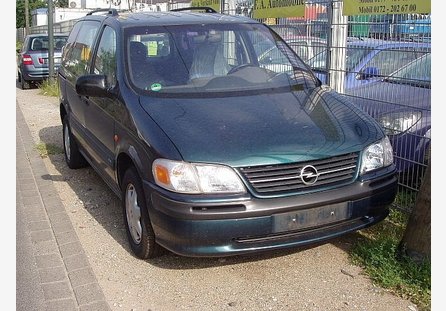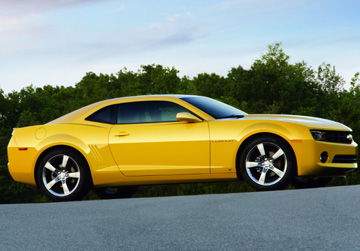
Opel Sintra is family owned, but…
It has only been on the market for four years. When it entered production in 1996, both GM and European Opel had high hopes for it. This van, built in the USA, was supposed to seriously compete with companies such as VW Sharan, Ford Galaxy, Renault Espace and Seat Alhambra. And yet it didn't work. Why?
Sintra, according to many users, is one of the most reliable Opel models (?). Extremely roomy, capable of carrying up to seven adult passengers, the van is perfect as a long-distance travel companion - it will fit not only a large family, but also a lot of luggage. At the same time, no one, not even passengers in the rear single seats, should complain about the lack of space.
Also, in terms of equipment, Sintra was a pretty decent level: four airbags, ABS, air conditioning and electrics - in fact, in the late 90s it was a pretty good “standard”. In addition, Sintra, unlike most competitors in the class, had sliding rear doors, rather than sliding, as in passenger cars. Thanks to this simple, but more expensive than traditional method, getting into the rear seats of an Opel hailing from the USA was extremely easy.
Under the hood of the immense Opel, three power units could operate - two gasoline and one diesel. The base 2.2-liter gasoline engine produces 141 hp. seems like the best proposal. This provides the large car with not only decent performance (0-100 km/h in 12.7 seconds, top speed over 180 km/h), but also very low fuel consumption (7-11.5 l/100 km). However, it proves durable and pleasant to use, and thanks to its use in many other Opel models, access to spare parts is also relatively easy. The only “disadvantage” of the drive unit is the timing - replacement every 120 80, recommended by the manufacturer. km is a very optimistic option - it’s worth reducing the interval to 90 thousand. km.
The second petrol unit is a three-liter six-cylinder engine with an impressive output of over 200 hp. With this heart under the hood, Sintra accelerates to 100 km/h in 10 seconds and can reach a top speed of over 200 km/h. Unfortunately, in this case, the cost of maintaining the car (fuel consumption 8 - 16 l / 100 km, maintenance at an authorized service station, spare parts) makes it a unique offer only for people in love with V-engines. Fortunately, in this case there are no problems with frequent malfunctions.
The only diesel installed under the hood of the Sintra is an old Opel design with a volume of 2.2 liters and a power of 116 hp. Unfortunately, unlike its petrol counterparts, this bike is not as popular with its users. Poor performance, frequent breakdowns, expensive parts all mean that buying a Sintra with this drive must be carefully considered. Moreover, fuel consumption is also not impressive - in the city 9 - 10 liters is not a revelation. If anyone is thinking about saving money, the 2.2L petrol engine is probably the smarter solution... the gas unit.
In the used car market, Sintra is a very interesting offer. For an eleven-twelve-year-old powerful and versatile car, you need to pay only 8-11 thousand. zl. In return, we get a fairly well-equipped, roomy van, which should not cause many problems in operation (gasoline engines). However, before we decide to buy, there are a few things to know. The defeat of the car in Poland and Europe was due not only to the high price resulting from customs duties, but above all ... the level of safety. In Euro-NCAP crash tests, Sintra received only two stars (actually three, but the third star was crossed out) - why? Well, during the frontal impact test, the steering column was broken and the dangerous upward movement of the steering wheel would have had a high chance of driver death (fatal neck injuries). Also, the hard plastic of the cab and the severe deformation of the legroom seriously damaged the lower limbs of the dummy ... You should keep this in mind when deciding to buy this car (http://www.youtube.com/ watch?v=YsojIv2ZKvw).
